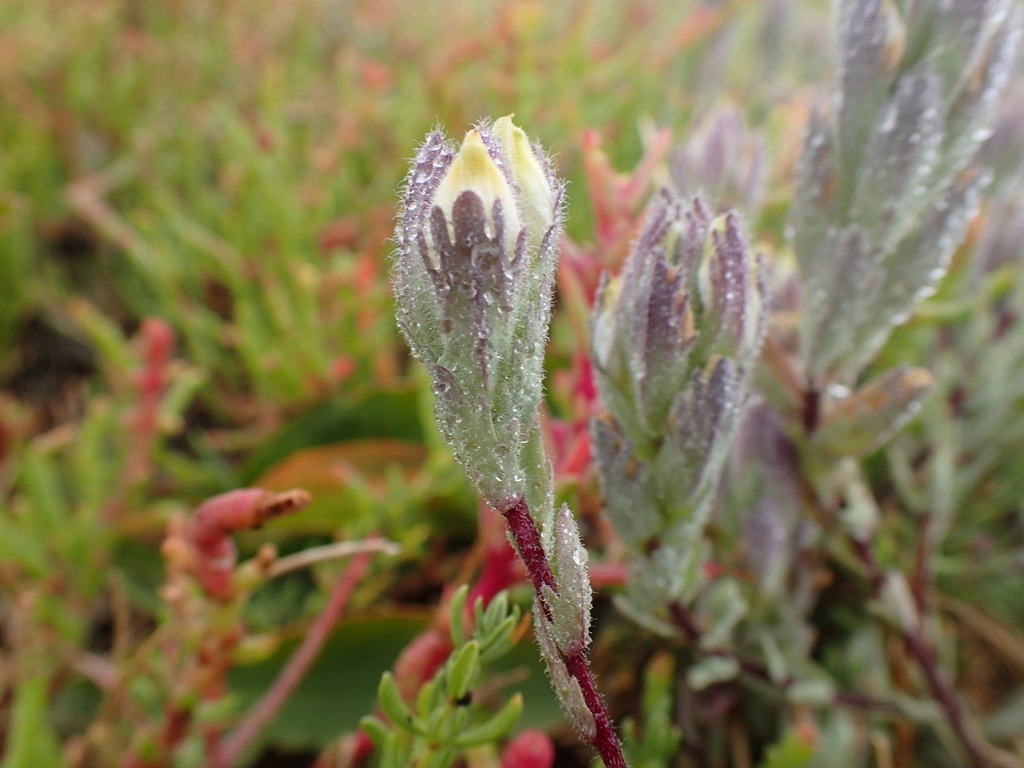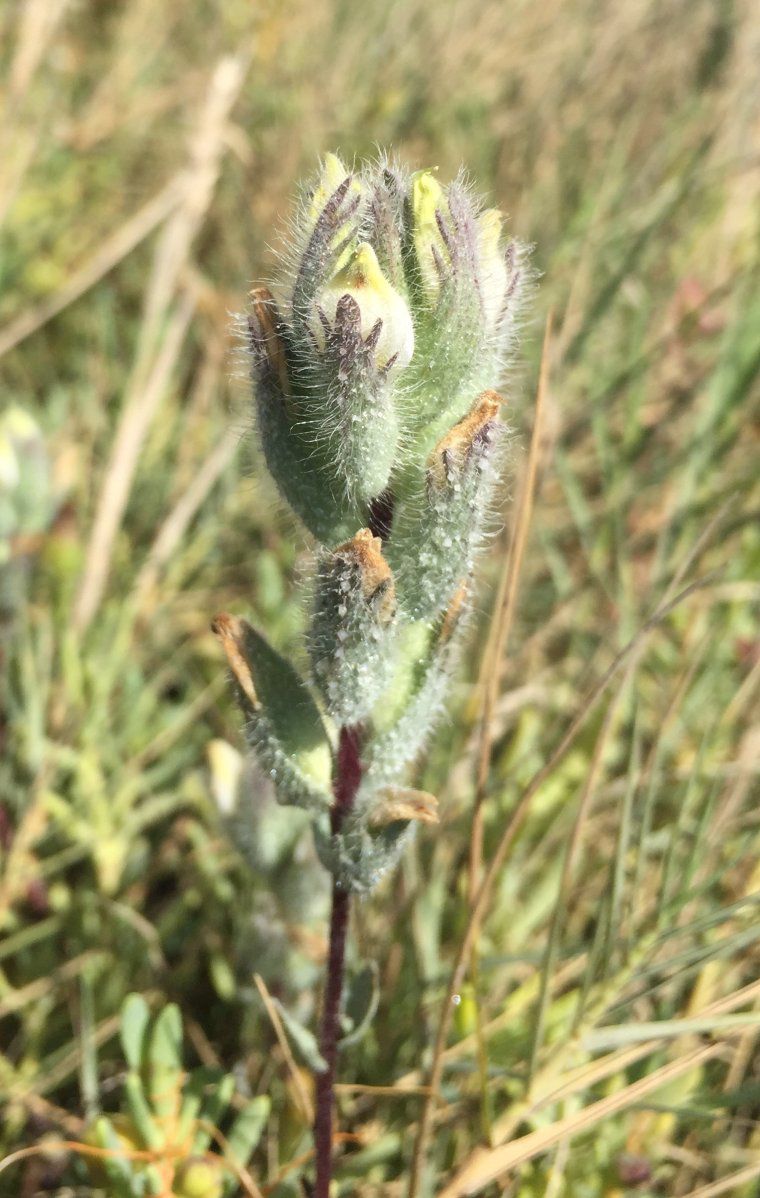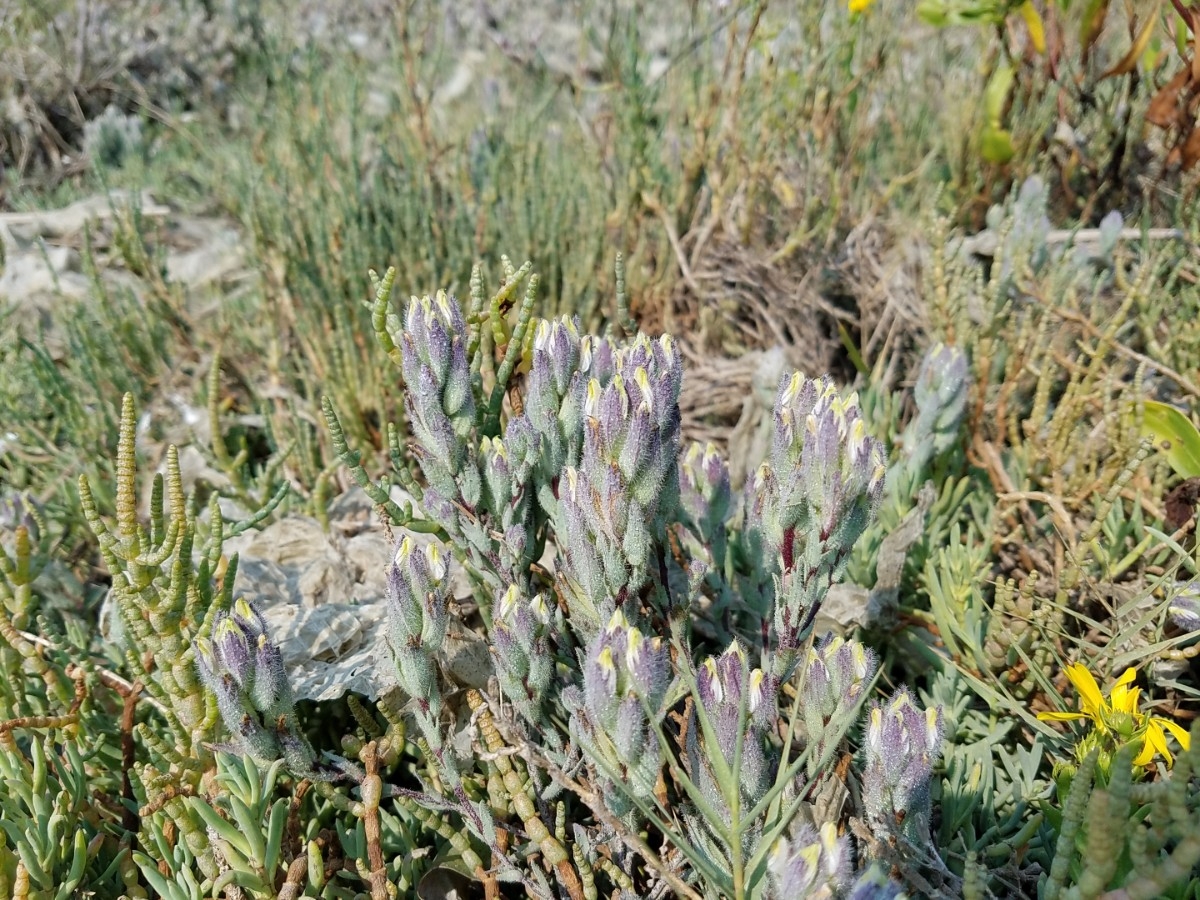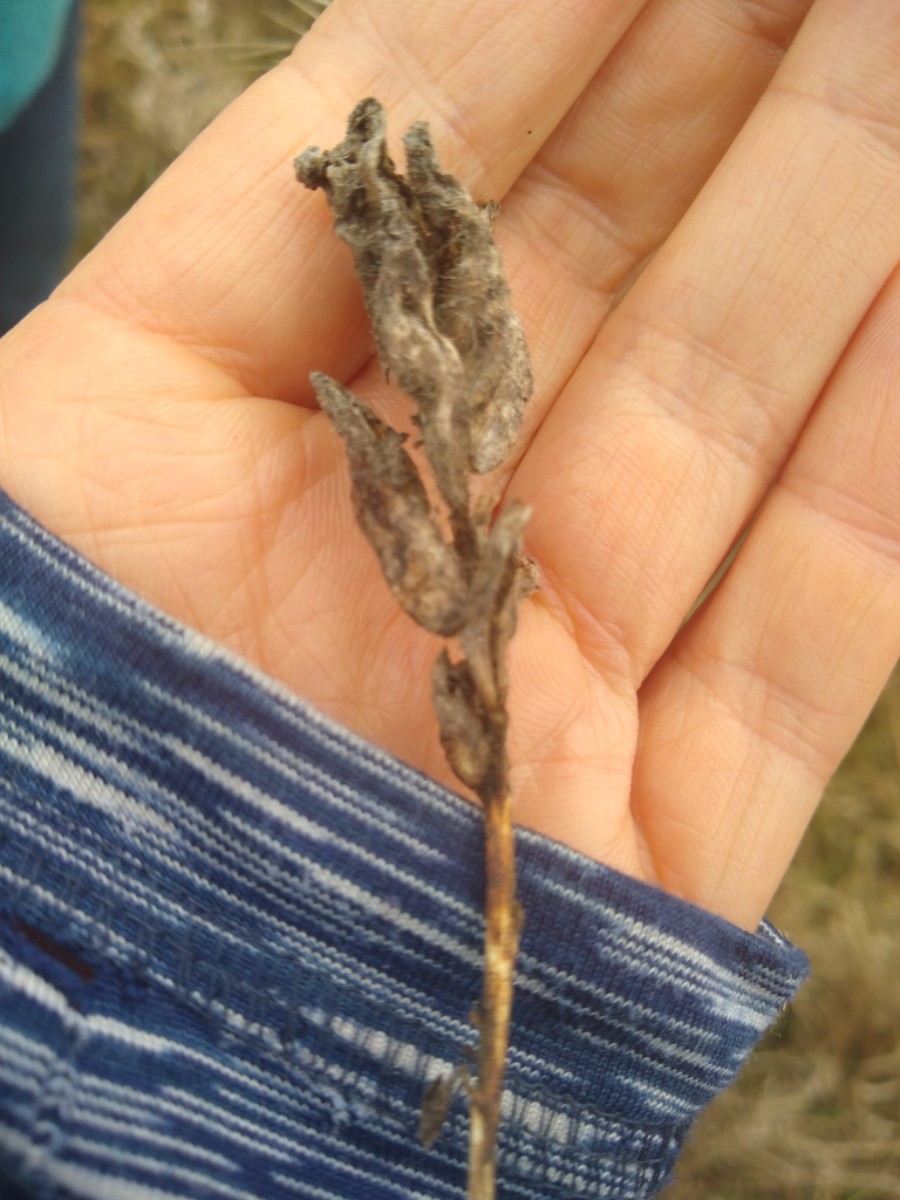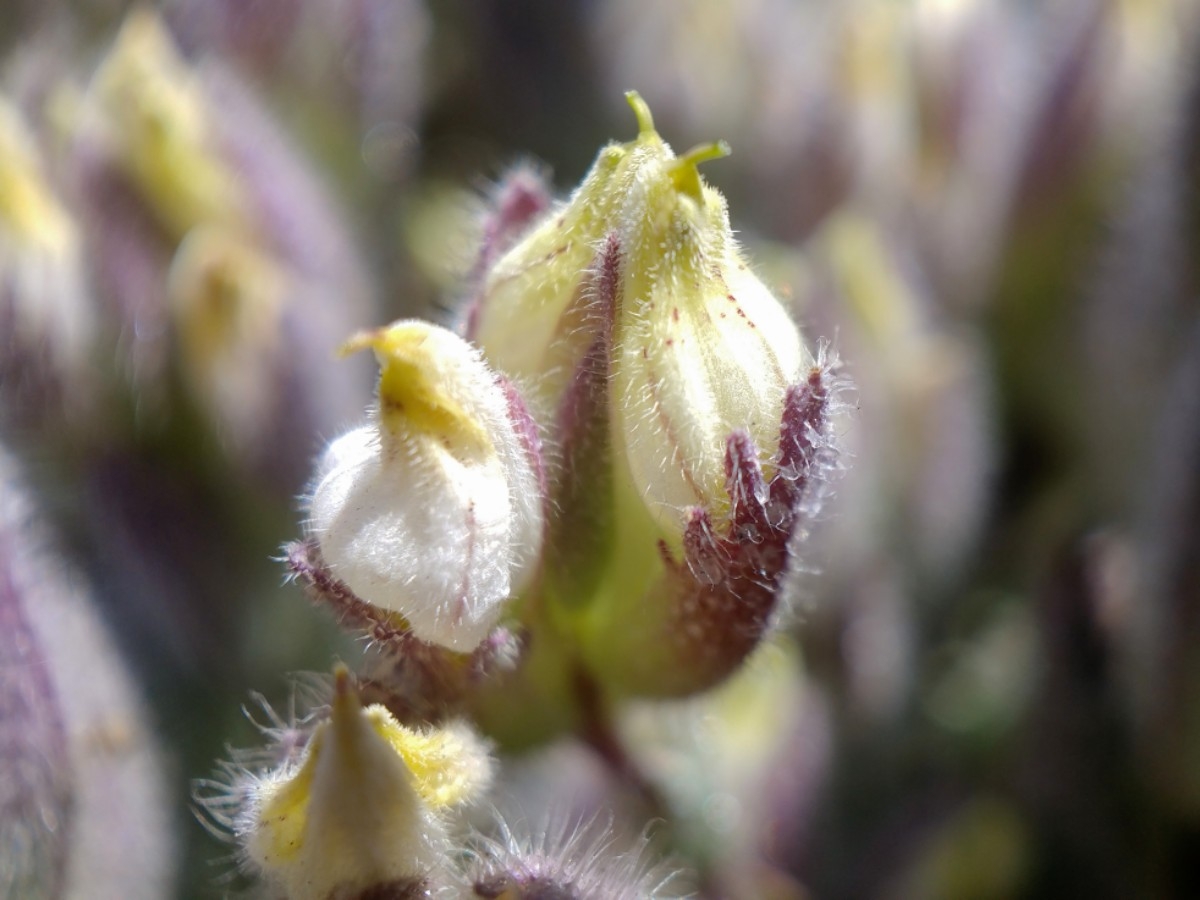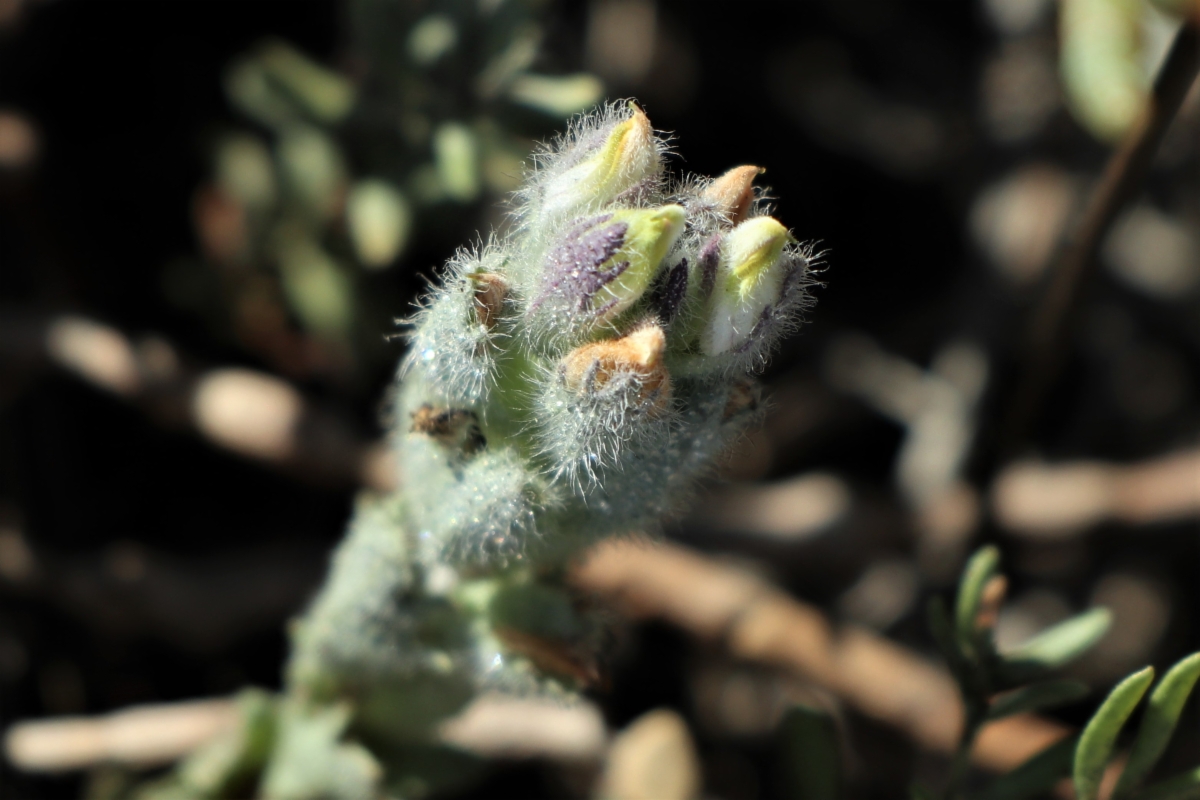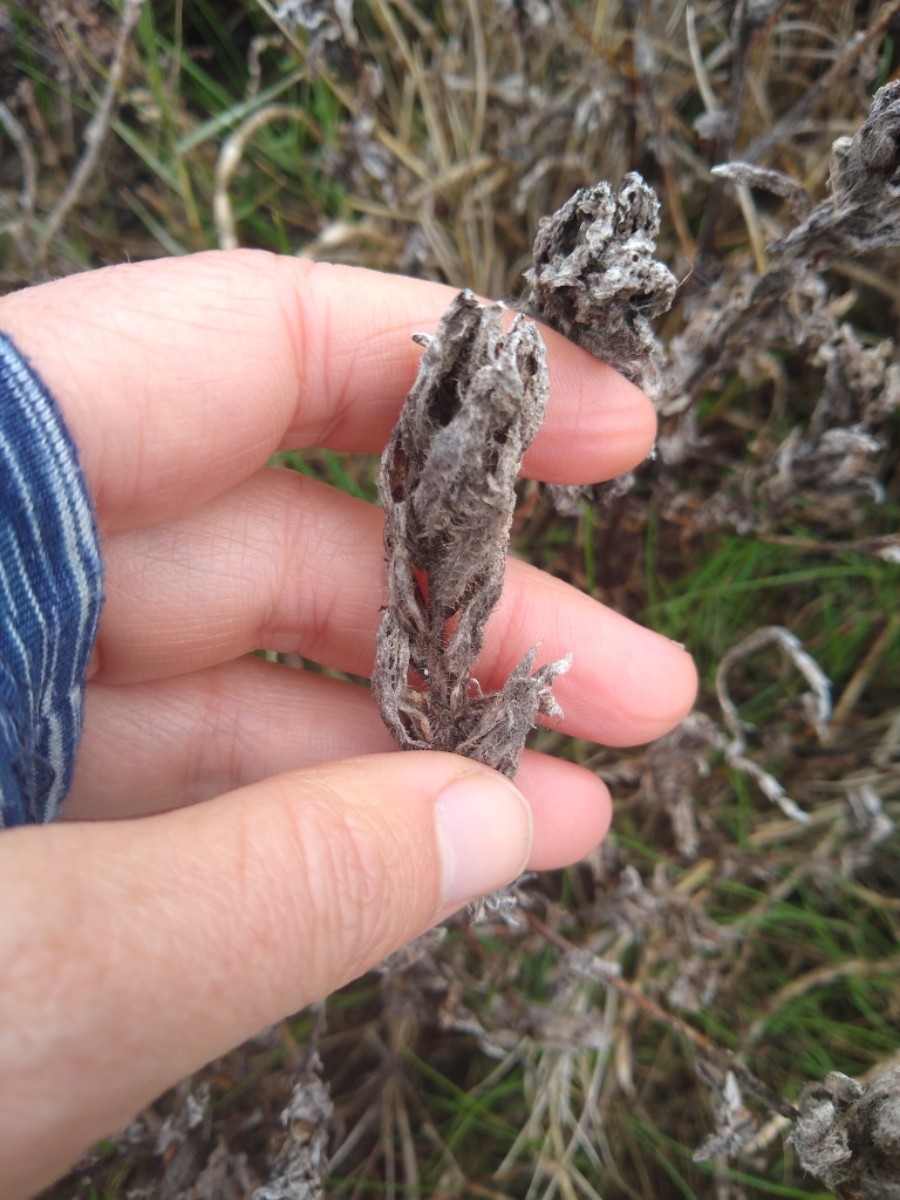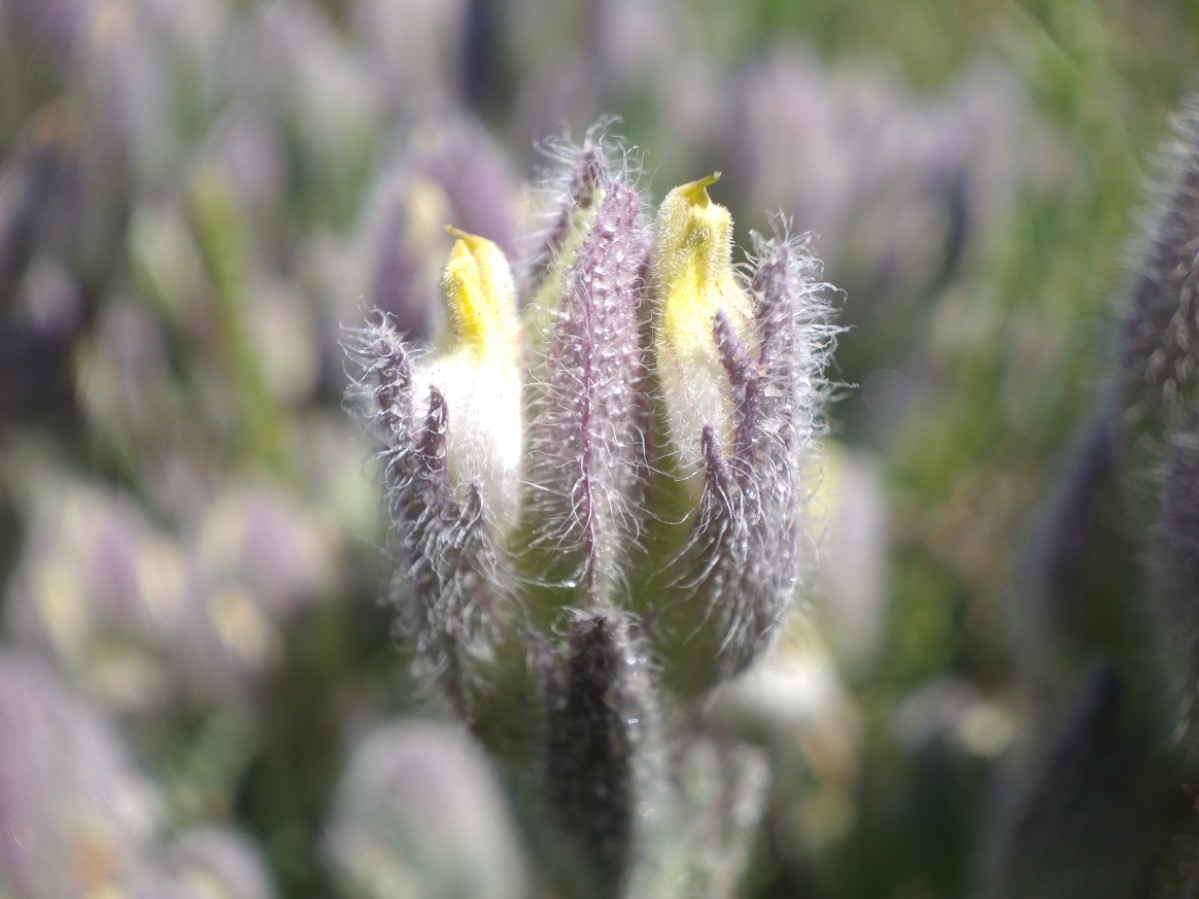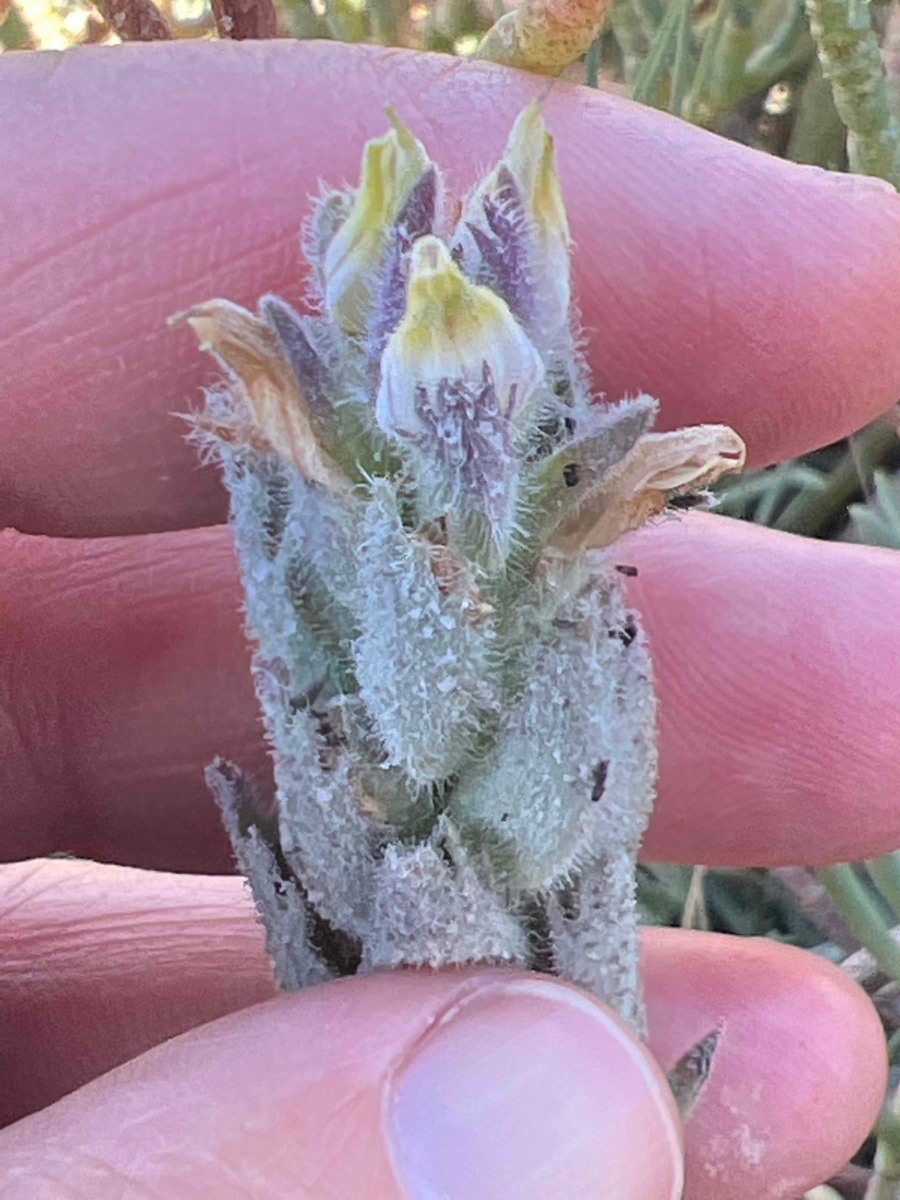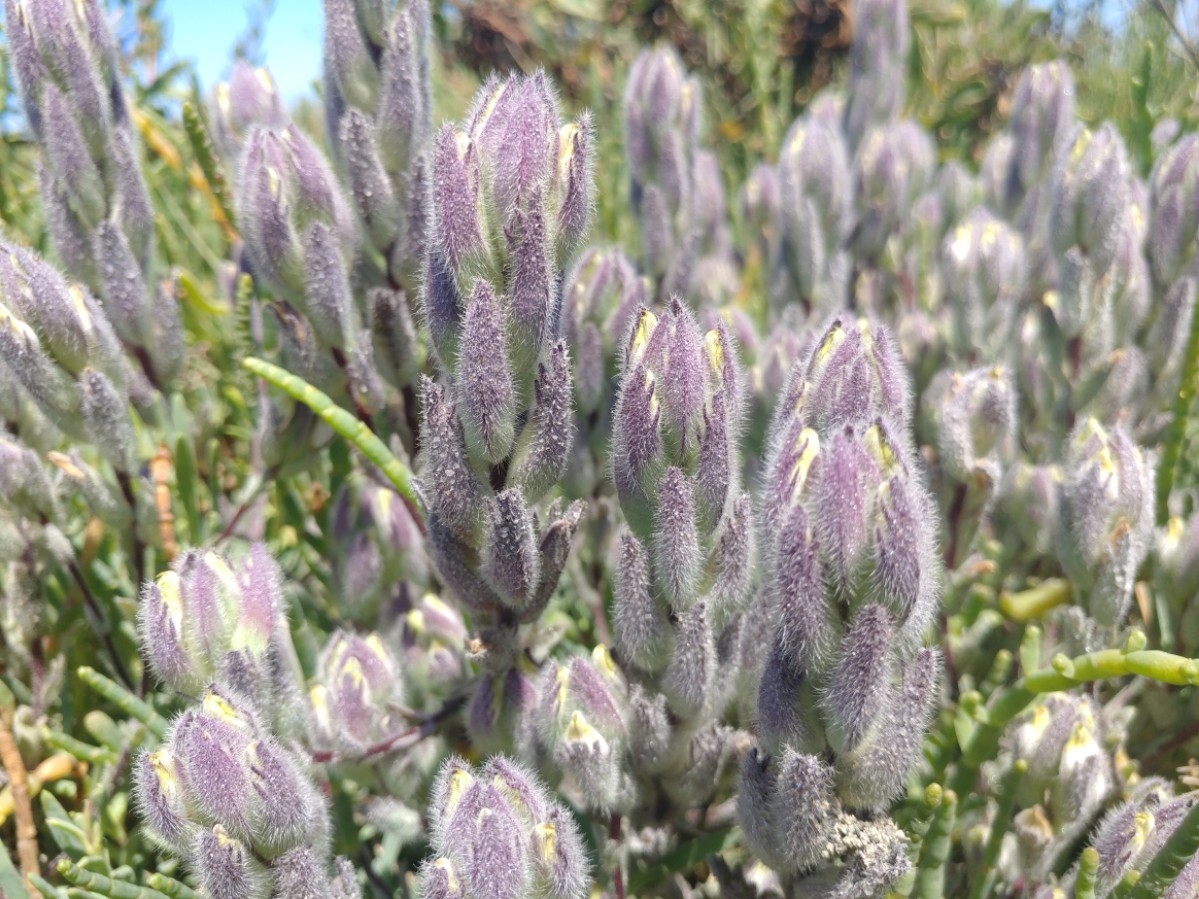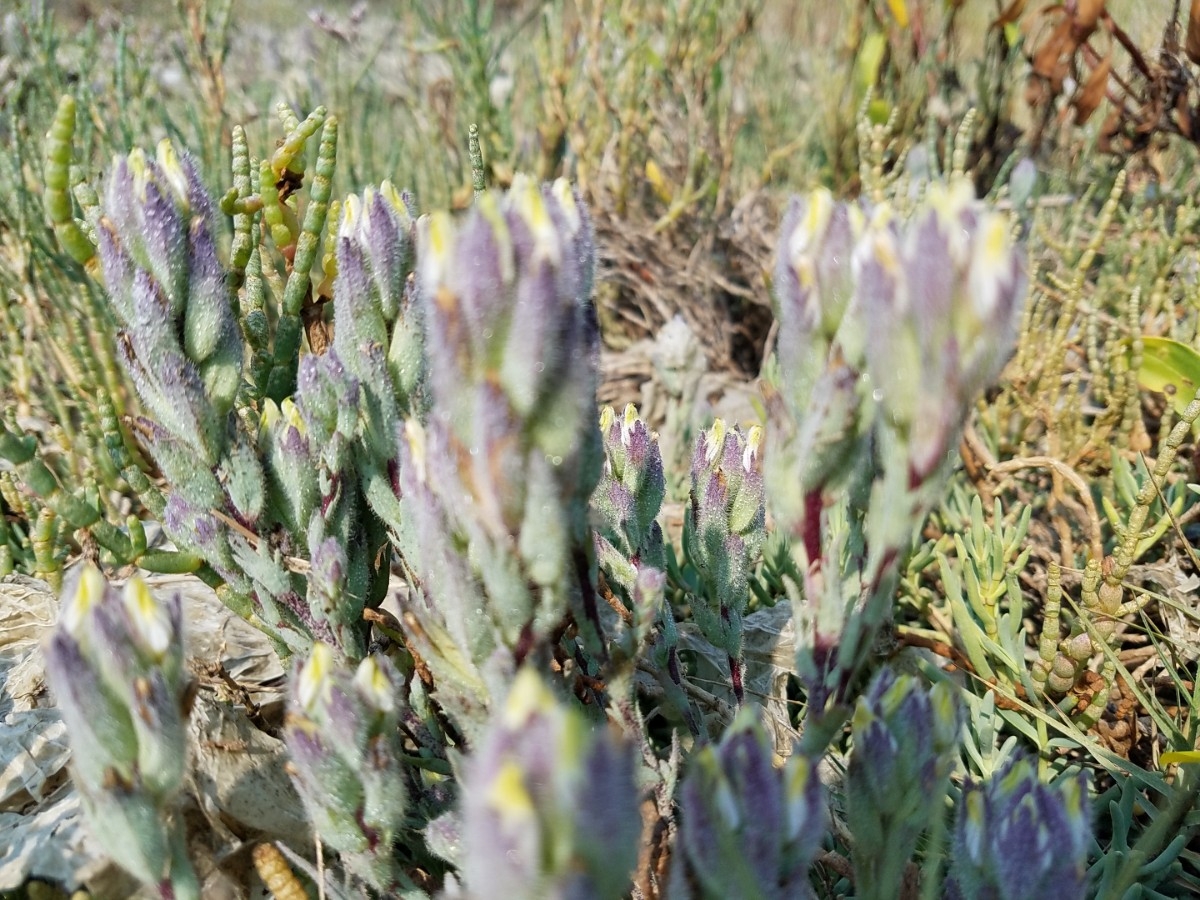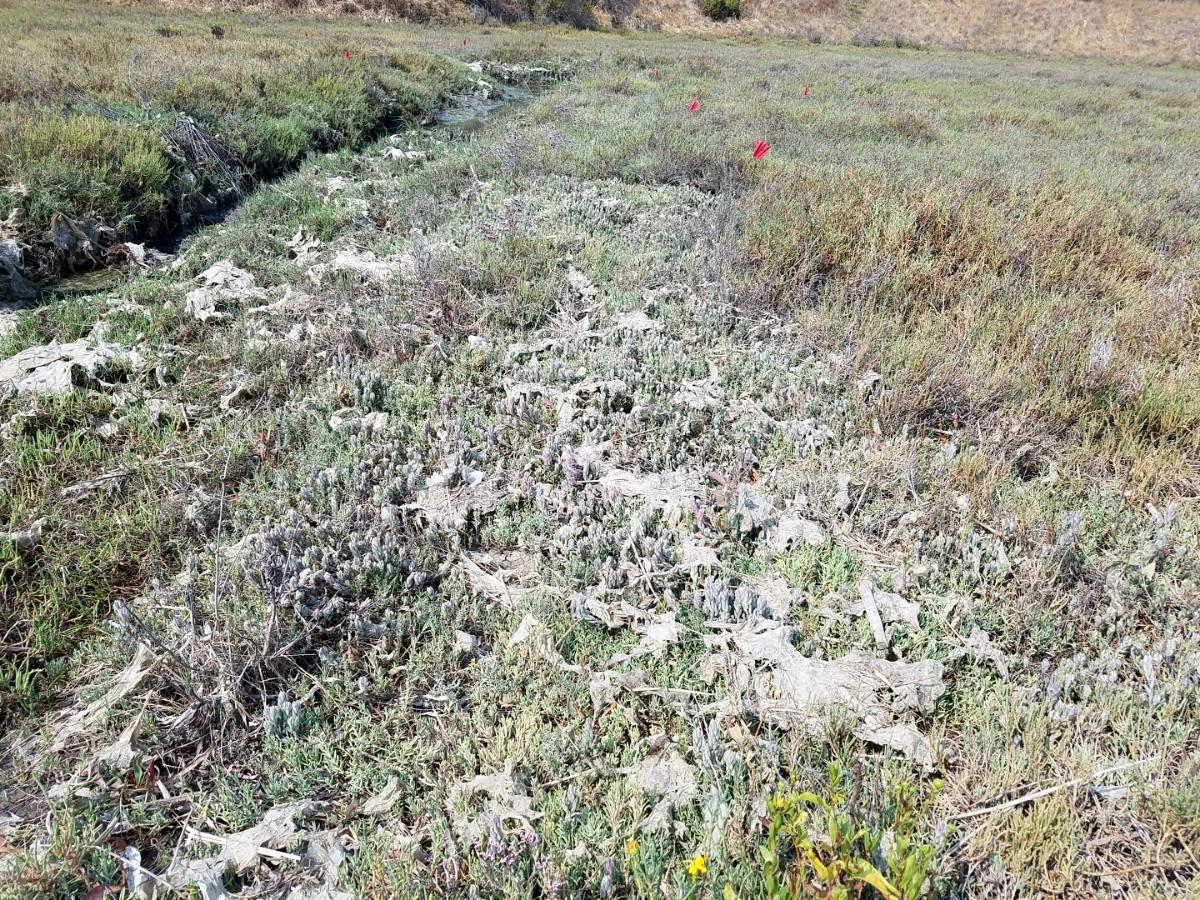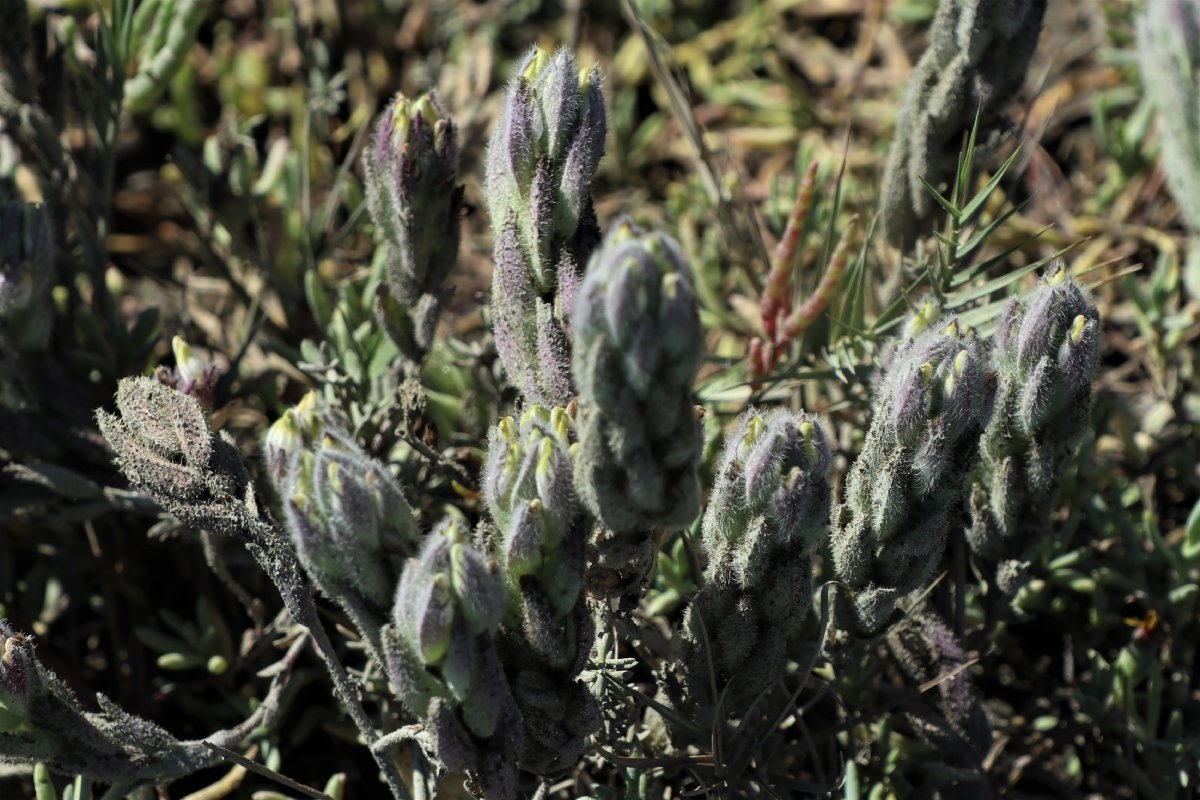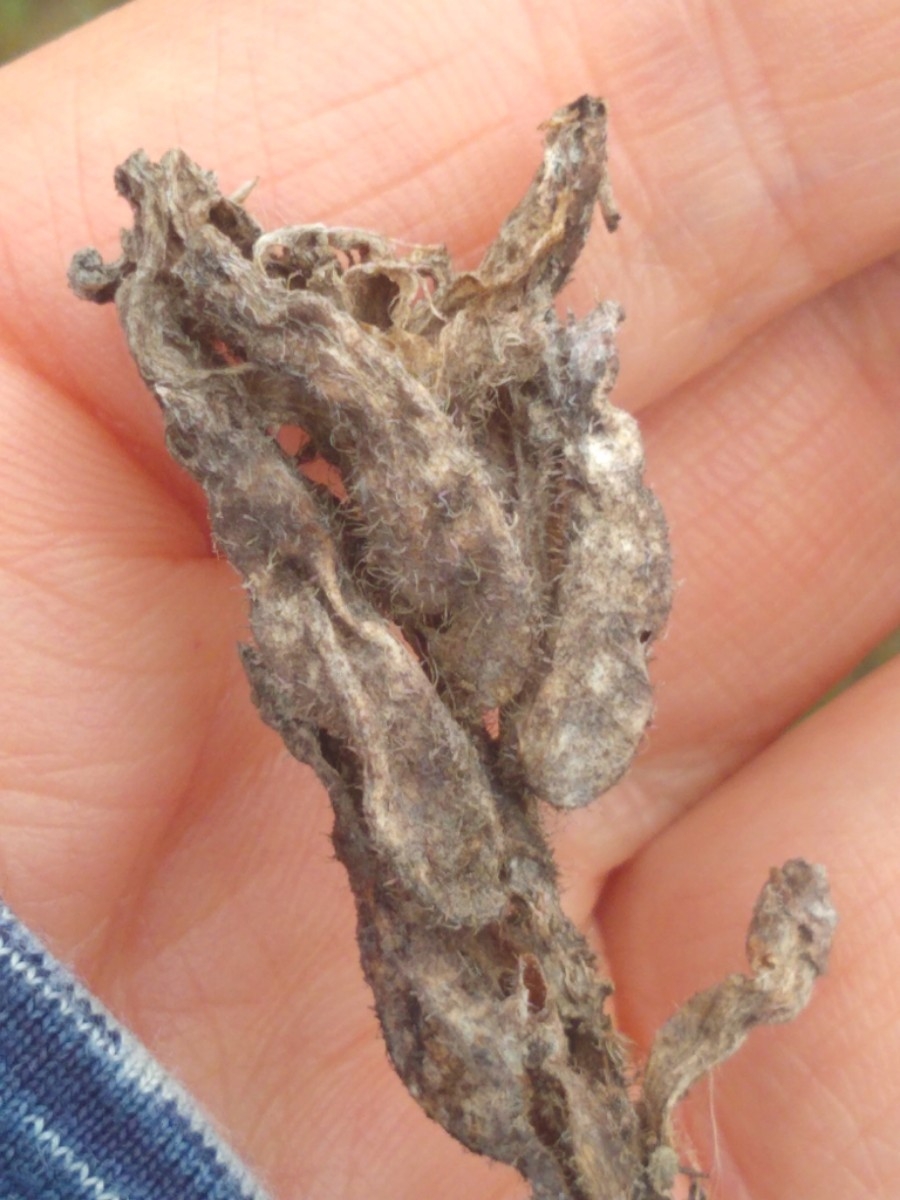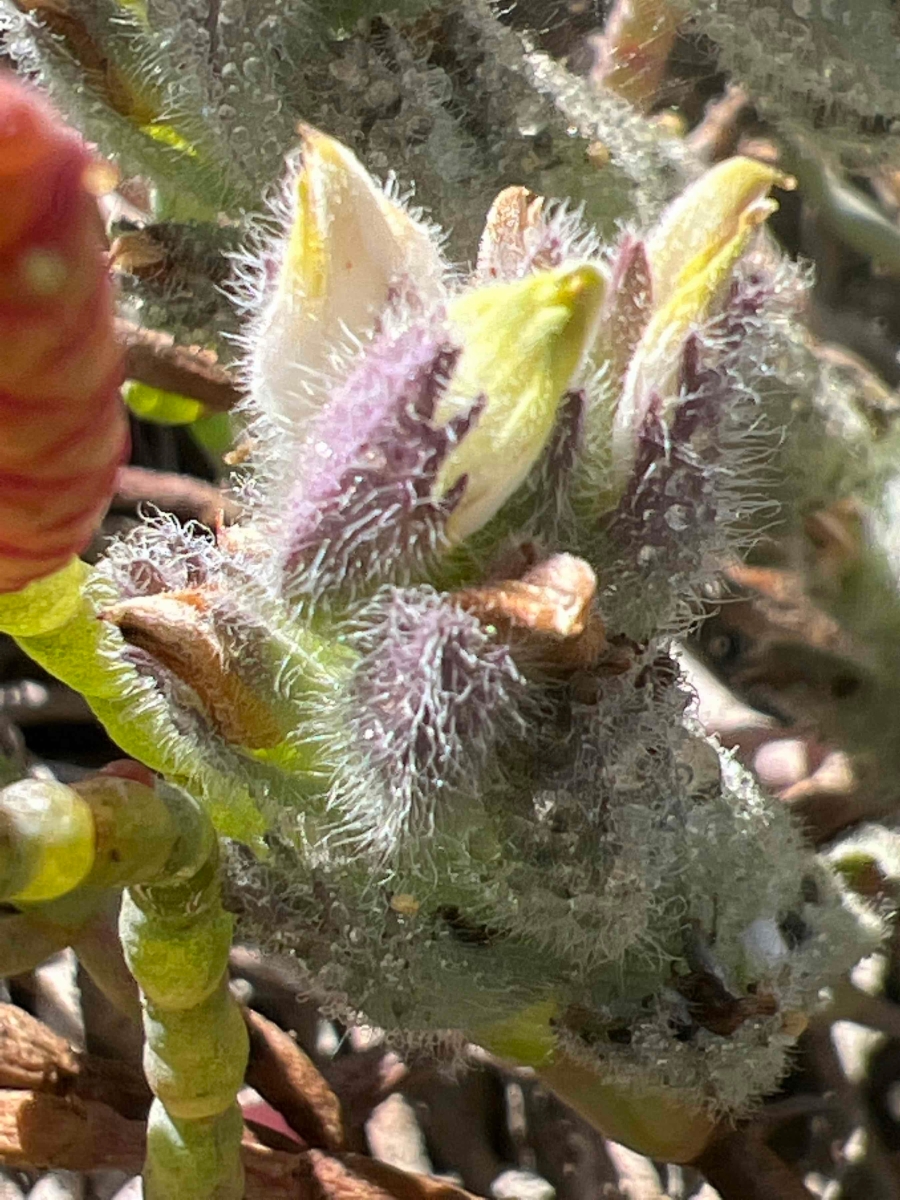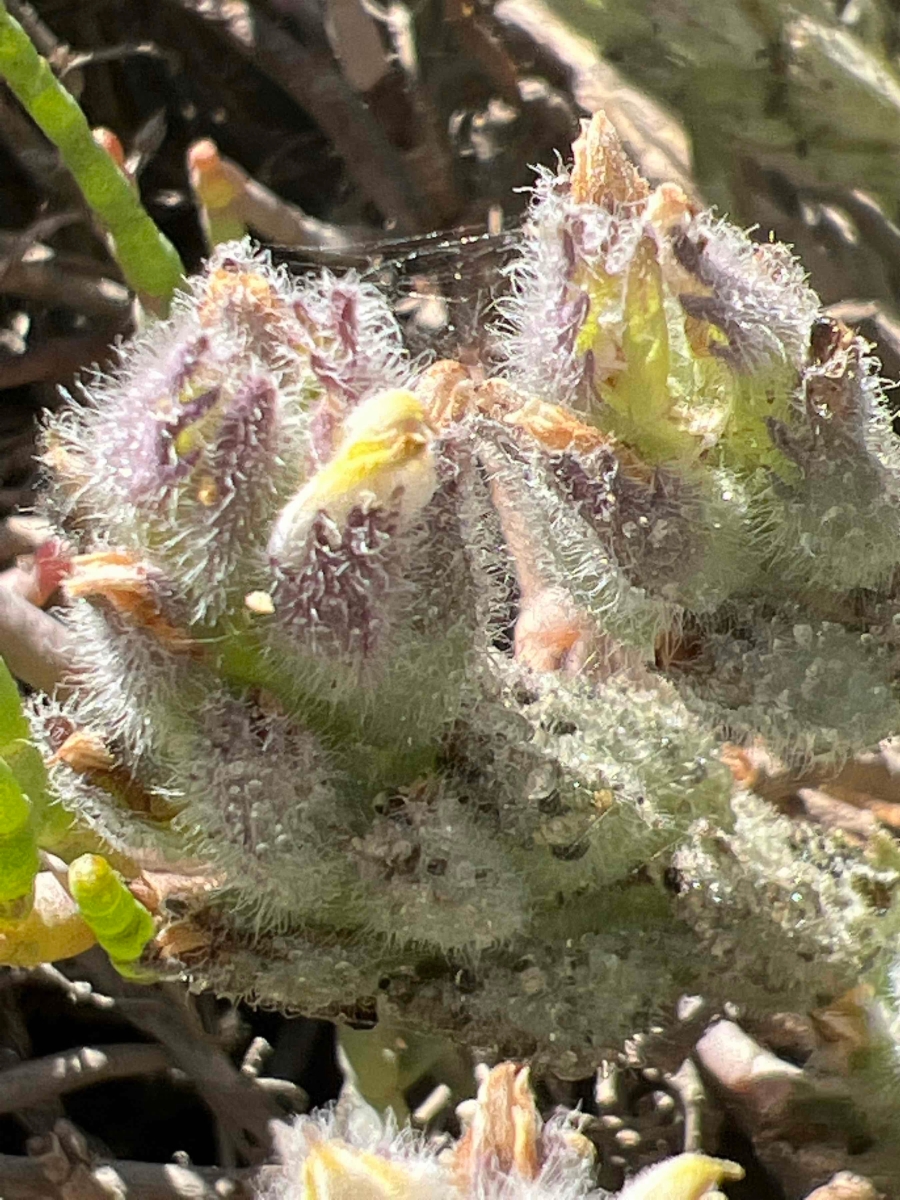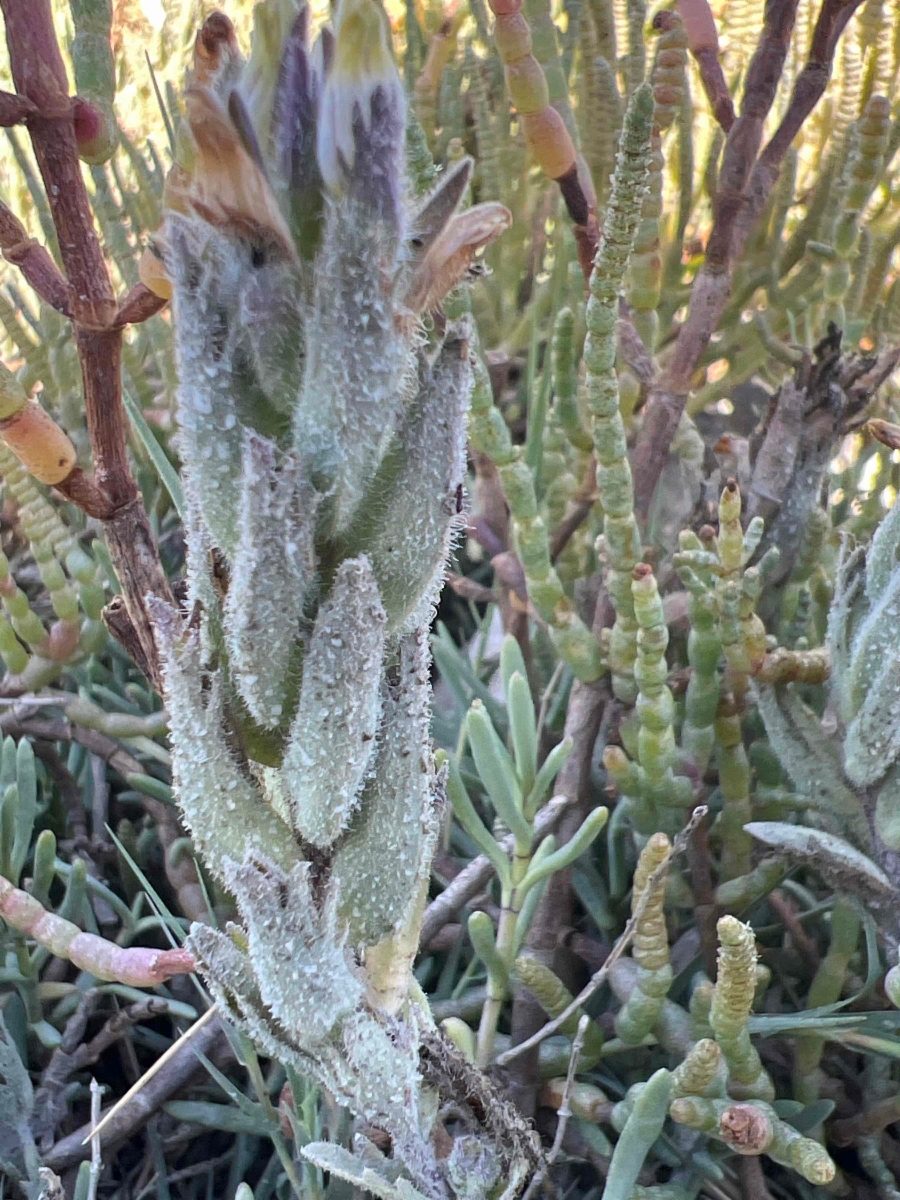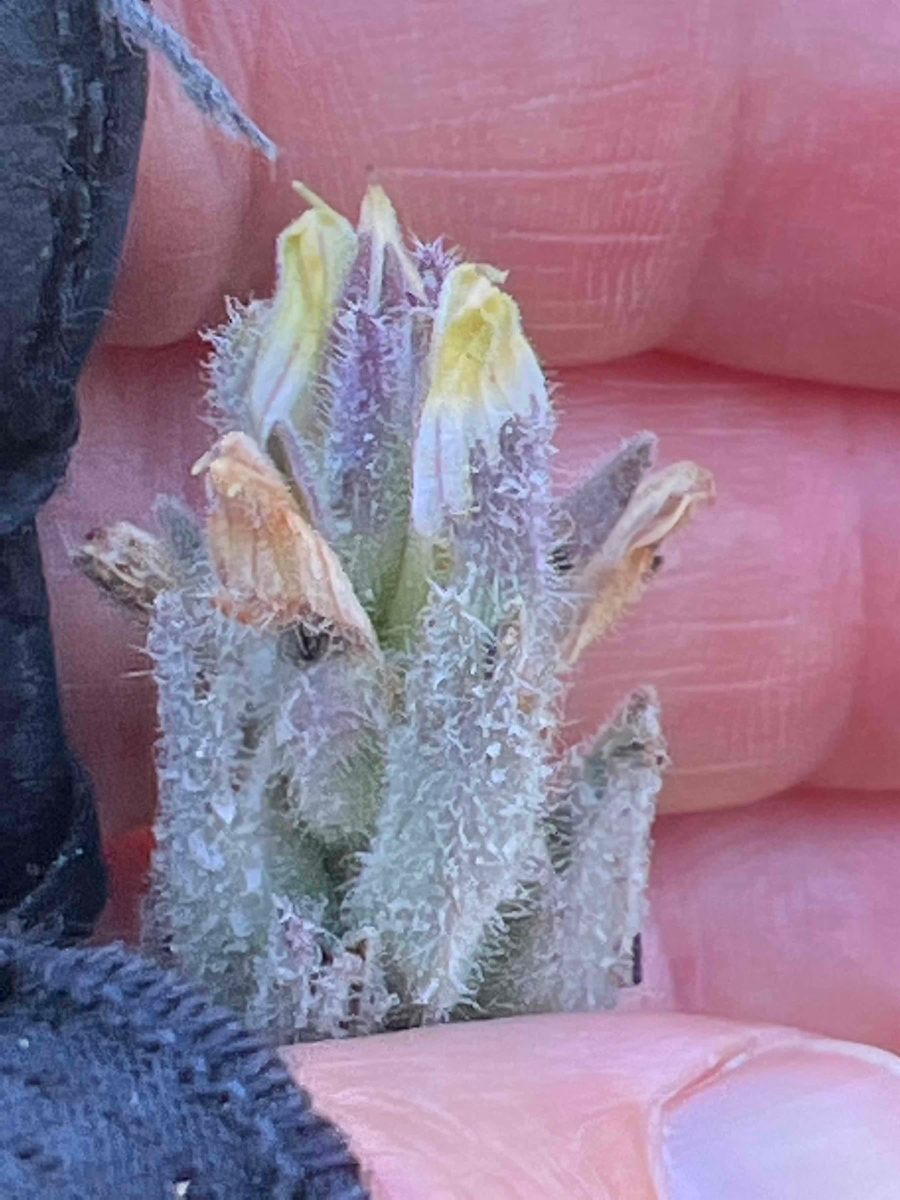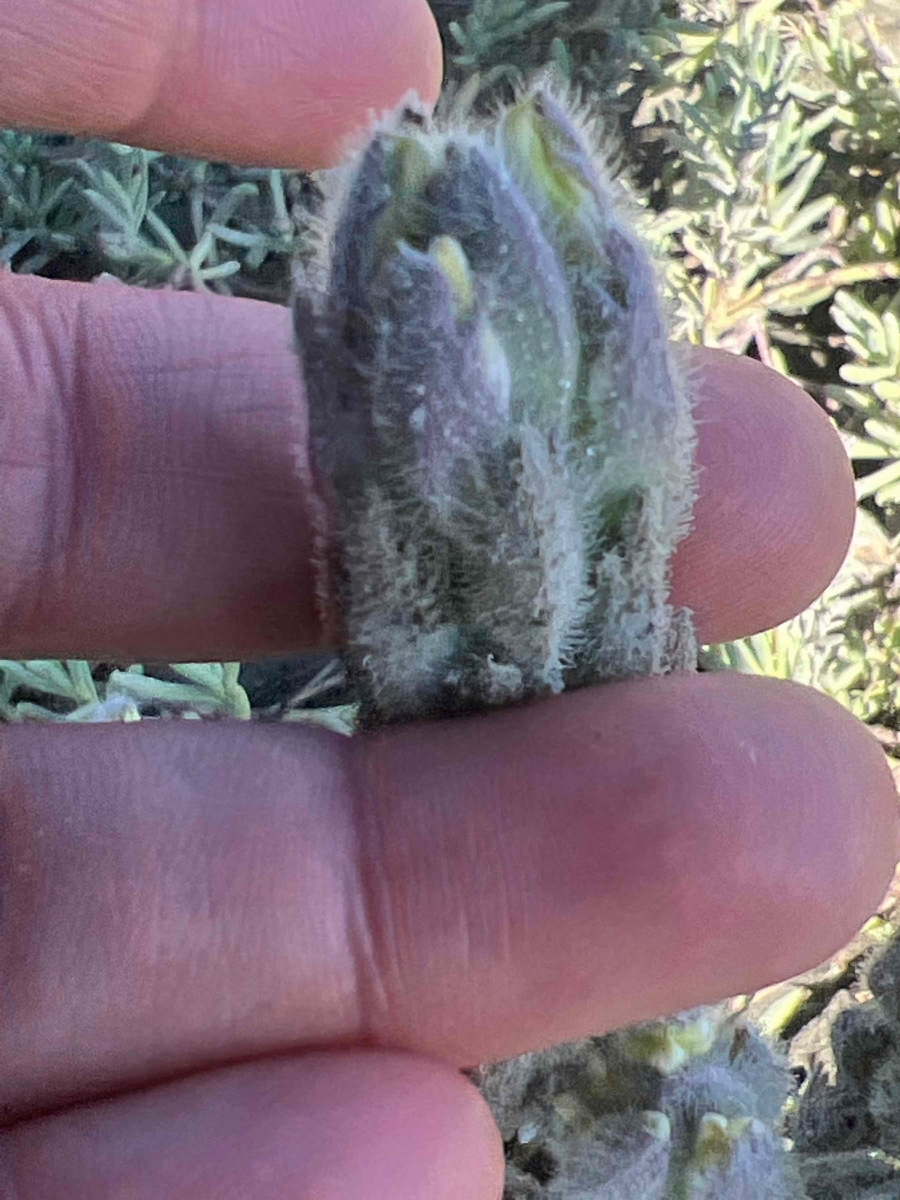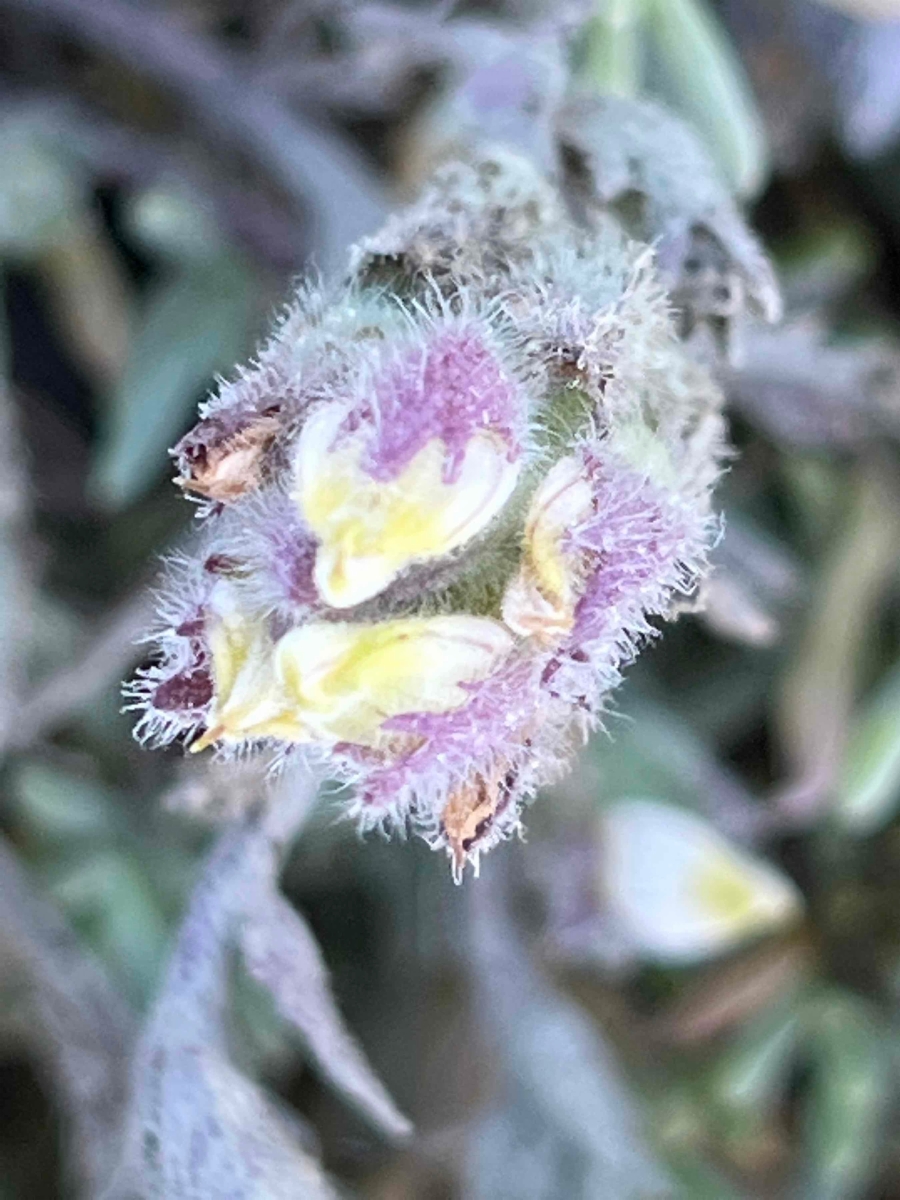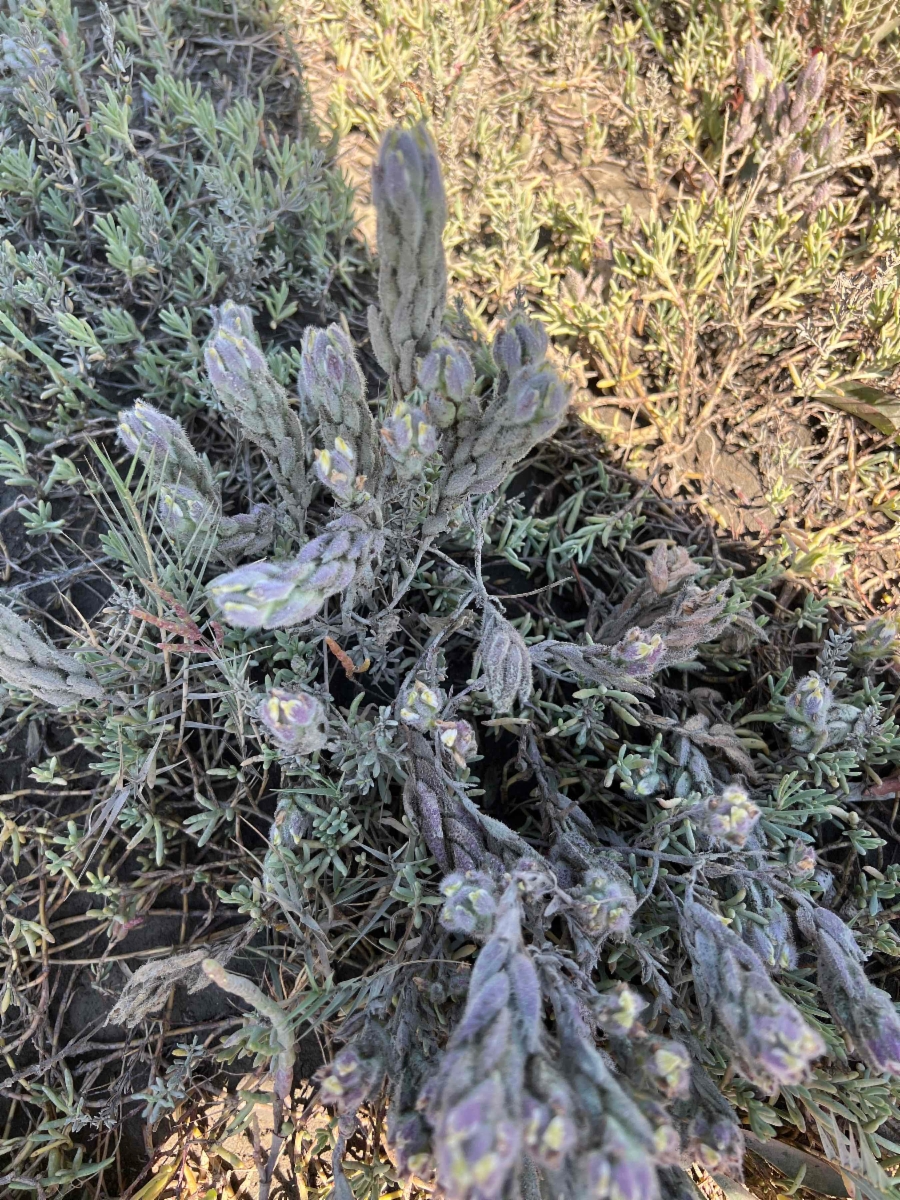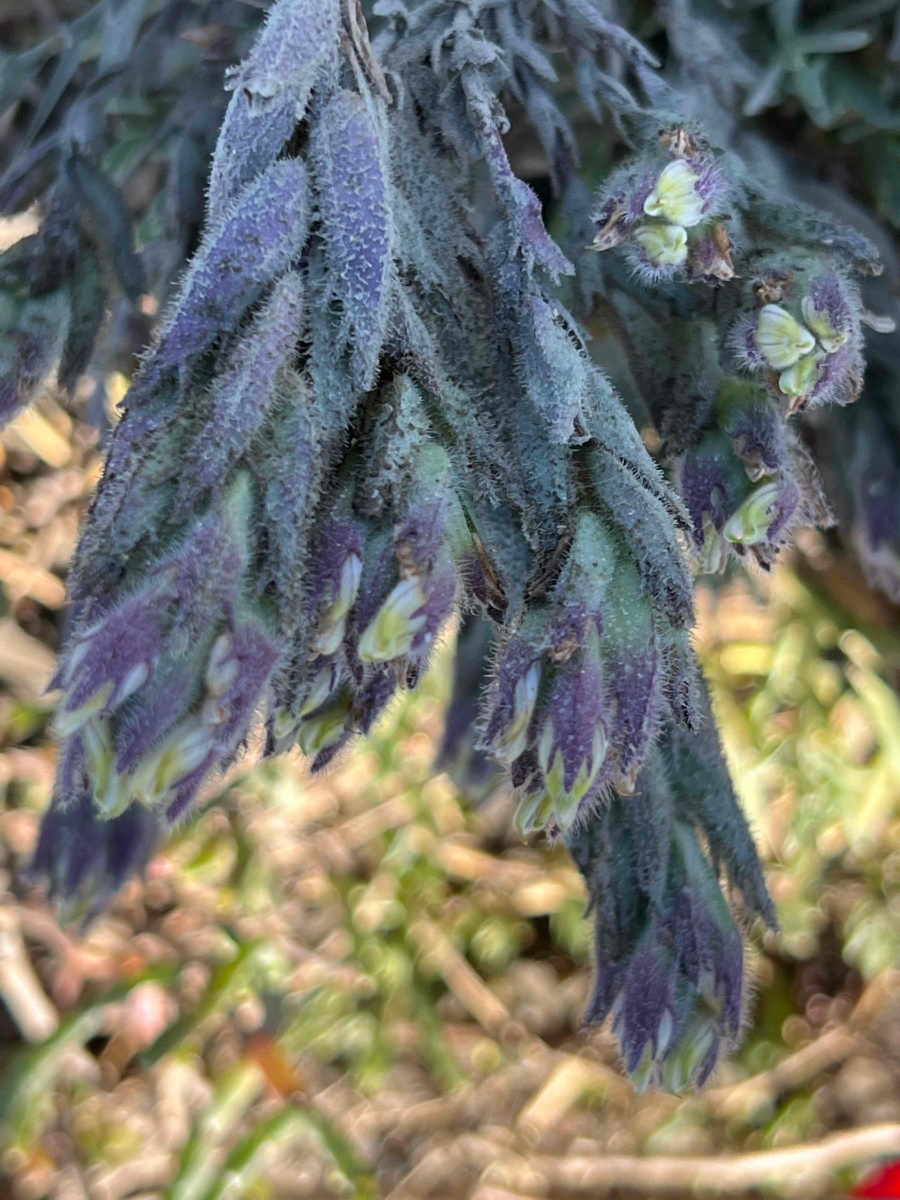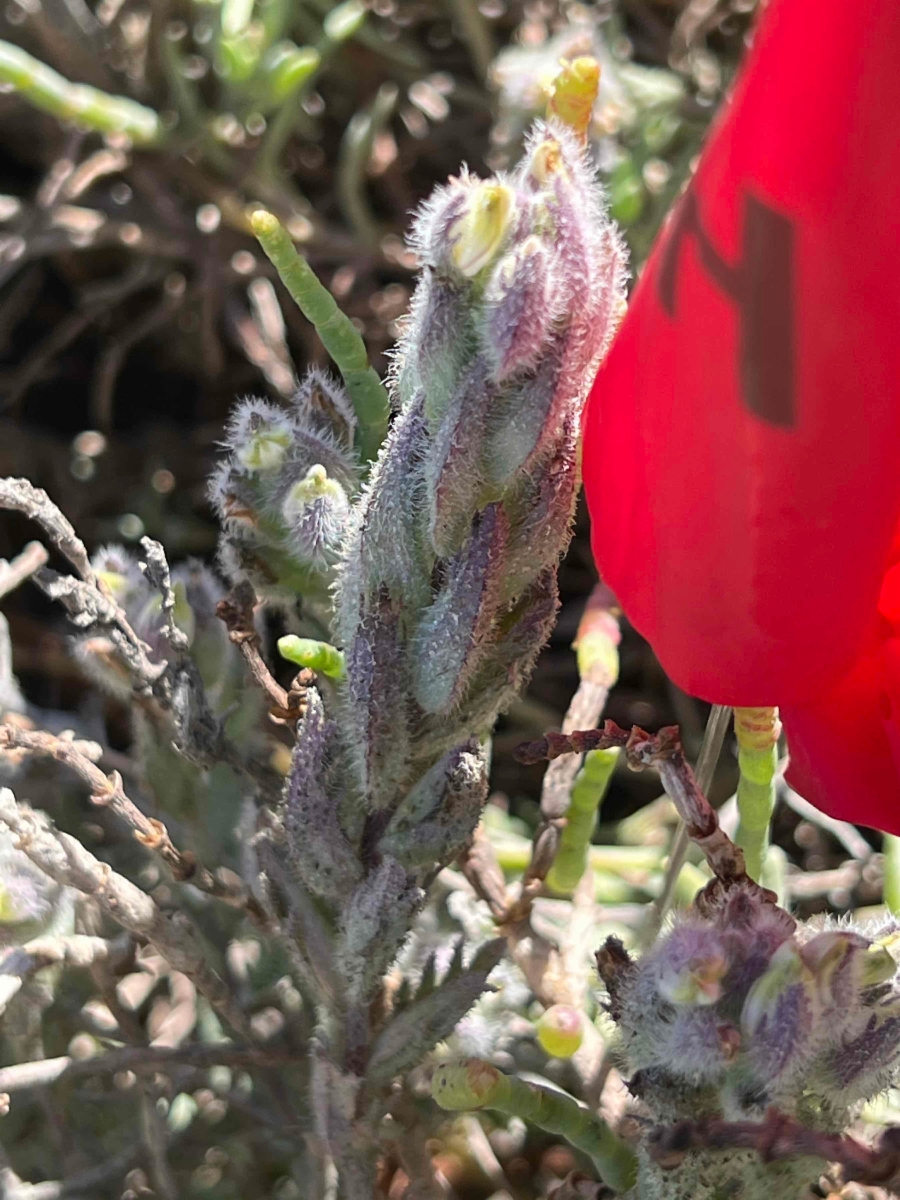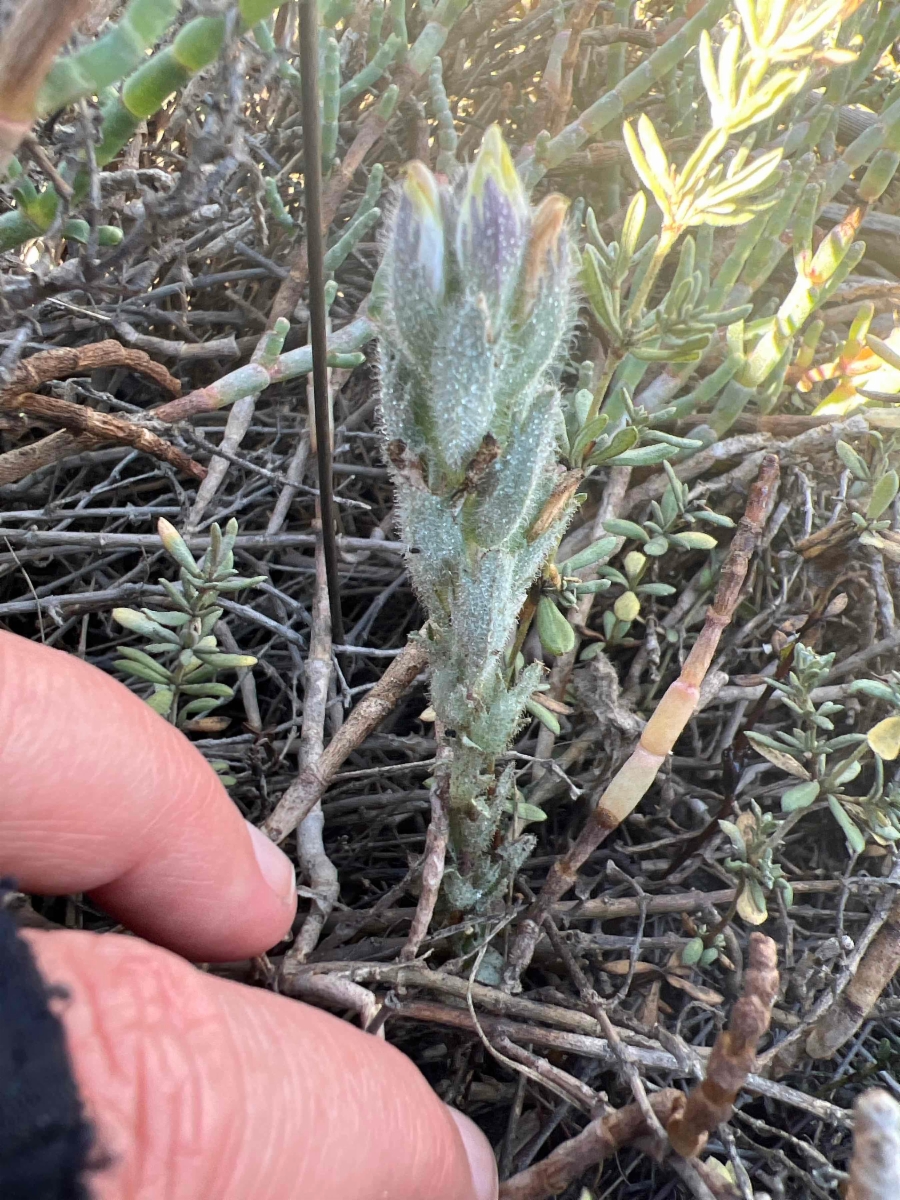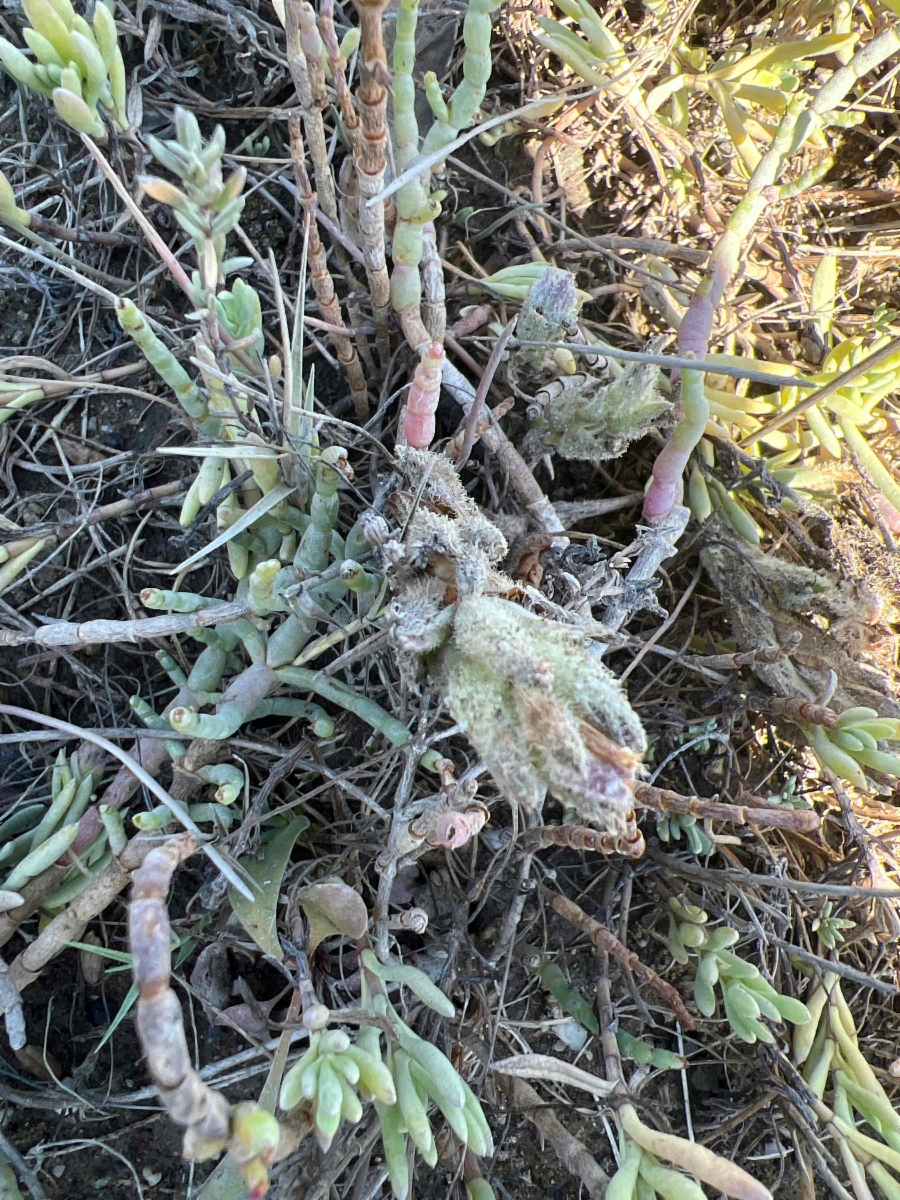Chloropyron molle (A. Gray) A. Heller ssp. molle
Soft bird's-beak
2021 Scott Yarger
2018 Kevin Sherrill
2021 Denise Defreese
2020 Cynthia Powell
2010 Bing Huey
2020 R.A. Chasey
2022 Suzanne L. Weakley
2020 Cynthia Powell
2020 R.A. Chasey
2022 Cynthia Powell
2020 R.A. Chasey
2021 Denise Defreese
2021 Denise Defreese
2022 Suzanne L. Weakley
2020 Cynthia Powell
2022 Cynthia Powell
2022 Cynthia Powell
2022 Cynthia Powell
2022 Cynthia Powell
2022 Cynthia Powell
2022 Cynthia Powell
2022 Cynthia Powell
2022 Cynthia Powell
2022 Cynthia Powell
2022 Cynthia Powell
2022 Cynthia Powell
Chloropyron molle ssp. molle is an
annual herb that is
native to California, and endemic (limited) to California.
California Rare Plant Rank: 1B.2 (rare, threatened, or endangered in CA and elsewhere ).
State of California status: Rare .
Federal status: Endangered .
Siskiyou
Del Norte
Modoc
Humboldt
Shasta
Lassen
Trinity
Plumas
Tehama
Butte
Mendocino
Glenn
Sierra
Yuba
Lake
Nevada
Colusa
Placer
Sutter
El Dorado
Yolo
Alpine
Napa
Sonoma
Sacramento
Mono
Amador
Solano
Calaveras
Tuolumne
San Joaquin
Marin
Contra Costa
Alameda
Santa Cruz
Mariposa
Madera
San Francisco
San Mateo
Merced
Fresno
Stanislaus
Santa Clara
Inyo
San Benito
Tulare
Kings
Monterey
San Bernardino
San Luis Obispo
Kern
Santa Barbara
Ventura
Los Angeles
Riverside
Orange
San Diego
Imperial
one or more occurrences
Name Status : JEF + CNPS
Alternate Names:
JEF + CNPS Cordylanthus mollis ssp. mollis
Information about
Chloropyron molle ssp. molle
Chloropyron molle ssp. molle: It is a hemi-parasitic plant that gets part of its nutritional needs from host plants including Distichlis spicata, or salt grass, and Salicornia spp., or pickleweed.
Chloropyron etymology:: from the roots chloros, meaning "green" or "greenish-yellow," and the roots pyr- or pyros, possibly meaning "divine," "fire," or "grain," of unknown application. The genus Chloropyron was published by Hans Hermann Behr in 1805.
/app/up/entry/365/th/109783.jpg:!/app/up/entry/52/th/15753.jpg:!/app/up/mg/490/th/mg147267-2.jpg:!/app/up/mg/357/th/mg107309-2.jpg:!0000 0000 0610 1409:!/app/up/mg/395/th/mg118712-1.jpg:!/app/up/entry/450/th/135228.jpg:!/app/up/mg/357/th/mg107313-1.jpg:!/app/up/mg/395/th/mg118712-0.jpg:!/app/up/io/250/th/io75238-0.jpg:!/app/up/mg/395/th/mg118712-2.jpg:!/app/up/mg/490/th/mg147267-0.jpg:!/app/up/mg/490/th/mg147267-1.jpg:!/app/up/entry/450/th/135225.jpg:!/app/up/mg/357/th/mg107309-1.jpg:!/app/up/io/250/th/io75257-1.jpg:!/app/up/io/250/th/io75257-0.jpg:!/app/up/io/250/th/io75238-1.jpg:!/app/up/io/250/th/io75238-3.jpg:!/app/up/io/250/th/io75251-0.jpg:!/app/up/io/250/th/io75251-1.jpg:!/app/up/io/250/th/io75251-2.jpg:!/app/up/io/250/th/io75251-3.jpg:!/app/up/io/250/th/io75254-0.jpg:!/app/up/io/250/th/io75237-0.jpg:!/app/up/io/250/th/io75255-0.jpg:!
2021 Scott Yarger:!2018 Kevin Sherrill:!2021 Denise Defreese:!2020 Cynthia Powell:!2010 Bing Huey:!2020 R.A. Chasey:!2022 Suzanne L. Weakley:!2020 Cynthia Powell:!2020 R.A. Chasey:!2022 Cynthia Powell:!2020 R.A. Chasey:!2021 Denise Defreese:!2021 Denise Defreese:!2022 Suzanne L. Weakley:!2020 Cynthia Powell:!2022 Cynthia Powell:!2022 Cynthia Powell:!2022 Cynthia Powell:!2022 Cynthia Powell:!2022 Cynthia Powell:!2022 Cynthia Powell:!2022 Cynthia Powell:!2022 Cynthia Powell:!2022 Cynthia Powell:!2022 Cynthia Powell:!2022 Cynthia Powell:!
po196992:!po85895:!mg147267:!mg107309:!null:!mg118712:!mu25439:!mg107313:!mg118712:!io75238:!mg118712:!mg147267:!mg147267:!mu25439:!mg107309:!io75257:!io75257:!io75238:!io75238:!io75251:!io75251:!io75251:!io75251:!io75254:!io75237:!io75255:!
Calflora :
Information on California plants for education, research and conservation,
with data contributed by
public and private institutions and individuals.
[web application]. 2024. Berkeley, California:
The Calflora Database
[a non-profit organization].
Available:
https://www.calflora.org/
(Accessed: 10/23/2024).
